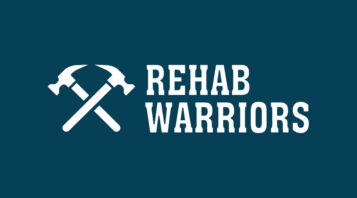Home equity loan, cash-out refinance, and HELOC—these are the three classic methods of leveraging your equity into cash. A home is frequently the largest asset in a family’s portfolio, but often feels like an endless source of expenses that can’t provide a return until it’s left behind in a sale or inheritance.
In truth, your home is a potential wealth-builder even while you continue to live in it by using it as a source of secured credit. A HELOC is a versatile pathway to accessing cash if and when you need it, even providing a way to address credit card debt or fund home improvement projects.
So exactly how does a HELOC work, and what does the application process entail? Let’s take a look at how HELOCs function and how to qualify for one.
What Is a HELOC?
A HELOC, or home equity line of credit, is credit secured against your property. To break it down:
- Home equity is the value of how much of your home you currently own (vs. what your mortgage lender owns). Borrowing against your equity means you’re putting your property on the line if you don’t repay what you borrow. Because of this, you’ll receive a lower interest rate than an unsecured credit card, which can mean significantly lower interest payments.
- Line of credit – A loan is a set amount that you borrow and then pay back, but a line of credit is a pool that you can choose to use (or not) up to a set credit limit. Just like with a traditional credit card, the HELOC lender doesn’t hand you a set pile of cash, but rather sets a limit on how much you can borrow.
How a HELOC Differs from a Regular Mortgage
A traditional mortgage is a lump sum loan secured by your property, where the mortgage lender is first in line to repossess your home if you fail to meet your repayment obligations. This loan amount stands in contrast to a HELOC.
A HELOC is a line of credit rather than a loan, and the lender will be second in line (after your primary mortgage lender) to recoup borrowed funds if unpaid debt results in a foreclosure. This kind of borrowing is often referred to as a second mortgage.
How Does a HELOC Work?
A HELOC can seem a bit complex since it’s like a home equity loan or mortgage in some of its process and functionality, and similar to a credit card in other ways. Once a HELOC is approved, there are two key stages: the draw period and the repayment period.
The Draw Period
During the draw period, your HELOC functions like an extra credit card with a great interest rate. You can:
- Choose whether to borrow – Use some of the amount, borrow all the way up to the limit, or leave it entirely untouched. You’ll need to make minimum interest-only payments on what you borrow during the draw period.
- Repay and re-borrow – If you borrow up to the limit, you can make payments and then borrow again. Your HELOC limit is a maximum on how much can be borrowed at one time, not a total limit of all funds borrowed. This aspect of a HELOC is what makes it a type of revolving credit.
- Use it for years – The length of a draw period is one of the terms to negotiate when applying for a HELOC. Ten years is the typical length, but you can opt for a draw period from five to 20 years depending on the lender.1
The Repayment Period
Unlike a credit card account that you could have open indefinitely, once the draw period for a HELOC closes, the repayment period begins.
During this stage, which typically lasts 20 years, you’ll make monthly payments on both the principal and interest of what you owe at the end of the draw period.1 This will help you chip away at the outstanding loan balance.
Interest Rates and Payments
While traditional, lump-sum home equity loans tend to be fixed-rate, HELOCs are by and large variable interest rate vehicles. You can, however, find some lenders that offer either fixed-rate HELOCs or hybrid HELOCs that have initial fixed-rate periods.
A variable interest rate means you may not be able to predict the dollar amount of your future payments, which will also be dependent on how much you owe at the end of your draw period.
The Application Process for a HELOC
A HELOC lender will be looking at two areas when considering an application: how likely the borrower is to meet their obligations, and the value of the property that secures the HELOC.
Unfortunately, there are cases where individuals with bad credit might be denied a HELOC. In such instances, it is worth exploring other options such as a sale-leaseback (more to come later), secured personal loan, a co-signed loan, or improving one’s credit score before reapplying.
Required Documents for a HELOC Application
You can avoid delays in your application processing by gathering up and providing the documents to support your case. If you’re specifically looking for a HELOC with bad credit, it becomes even more important to have all your documentation in place.
To prove both your current income and its stability, you’ll typically provide documents covering the past two months to two years including:
- Personal federal tax returns, paystubs, and/or W-2 forms2
- Business federal tax returns and/or bank statements if you’re self-employed
- Income award letter or bank deposit history for Social Security income
- Award letter or similar documentation for pension income
- Investment statements related to income
- Lease agreements and/or rental history related to rental income
- Account statements related to investment income, debts, and assets
Property documents include:
- Most recent mortgage statement
- Current year property tax statement
- Homeowners insurance policy showing coverage amount, premium, and deductible
- Title insurance policy and/or deed
Additional documents if applicable:
- Condominium association master insurance policy
- Flood insurance declaration
- Trust agreement
- Power of attorney
The Role of Home Appraisal in HELOCs
Opening a line of credit against your home requires determining your equity, which is based on how much you owe on your property and its current value.
Lenders usually require a valuation from a licensed appraiser for a mortgage, home equity loan, or HELOC. The lender selects an independent appraisal firm who then schedules directly with you.
The appraisal fee, however, will be among the closing costs you’ll be responsible for at signing. Appraisal costs can range from $260 to $800, with $350 as the national average.3
Understanding the Approval Process
In an attempt to answer the question, “how long does it take to get a HELOC?”, we need to delve into the approval process. Your application may receive an initial pre-approved status from a loan officer or online interface, but final approval is dependent on the underwriting process. An underwriter takes all the data related to your financial situation and your property in order to predict whether your application is a safe bet for the lender.
The three key numbers they evaluate are:
- Credit score – Most lenders require at least a 680 score for home equity financing, though some have a minimum of 720 or higher.4
- Debt-to-income (DTI) ratio – How much of your monthly gross income goes to paying off existing debts? Lender maximums vary, with most requiring 43% or lower.5 The target maximum DTI for homeowners according to the Consumer Financial Protection Bureau (CFPB) is 36%.
- Combined loan-to-value (CLTV) ratio – Add up all current loans and liens on your property including your mortgage balance, home equity loans, lien totals (such as contractor or tax liens), and any other current HELOCs (if you have a HELOC in its draw period, include the full HELOC limit; if in repayment, include the balance owed).
Divide this total by the appraised value of your home. Most lenders will require 80% or lower CLTV (you can find offers with 90% or even up to 125% CLTV caps, but they’ll be difficult to qualify for).4
In addition, underwriters tend to approve applications for primary residences that don’t already have a home equity loan or line of credit open—lenders don’t tend to want to be third in line to a loan security.
Here are some red flags that may result in a loan denial or an offer with a higher interest rate:
- Past bankruptcy, foreclosure, or short sale
- History of late mortgage payments
- Delinquent accounts in your recent credit history
- Employment length under two years
- Undocumented, seasonal, or inconsistent income or expenses
Alternatives to a HELOC
Take a look at these popular equity financing or conversion alternatives before you apply for a HELOC.
Home Equity Loans
Home equity loans and HELOCs are often considered side by side; they have similar application processes and benefits. They are different from HELOCs in these ways:
- You borrow a lump sum
- Loans are typically fixed-rate
- Interest rates are slightly lower than HELOCs
- Monthly repayments begin immediately
- The repayment term ranges from five to 30 years
Cash-Out Refinance
Rather than adding another loan, a cash-out refinance allows you to replace your current mortgage with a new one. Instead of borrowing the amount you owe on your current mortgage, you’ll borrow a higher sum that includes cash back to you, typically up to an amount equal to 80% of your equity.6
Interest rates tend to be slightly higher than traditional first mortgages but lower than both HELOCs and home equity loans.
Sale-Leaseback Programs: A Viable Alternative
With a sale-leaseback, also known as a rent-back agreement, instead of borrowing against your equity, you sell your property. But this sale doesn’t come with a moving truck after the deal closes—it’s combined with a leaseback contract that gives you first right to remain in your home under a rental agreement with future terms spelled out. There are many sale-leaseback benefits to explore and find out if this is the right option for you and your needs.
Key Takeaways
Get your paperwork in order before applying for a HELOC, and plan on a home appraisal as part of the process. Your loan offer terms will depend on your credit score, DTI, and home value plus the amount and number of loans against it. Underwriters review other factors including your income stability when considering your application.
So, is a HELOC a good idea? In many cases, yes – especially if you’re a homeowner with a lot of equity built up in your home, you can comfortably manage the payments, and the funds will be put towards something that improves your financial position like debt consolidation or home improvements. However, every situation is unique and it’s important to consider all your options before making a decision.
You can borrow up to about 80% of your home equity with a HELOC. If you’re looking to convert your full equity or to avoid another debt, consider a sale-leaseback.
This article is published for educational and informational purposes only. This content is based on research and/or other relevant articles and contains trusted sources, but does not express the concerns of EasyKnock. Our goal at EasyKnock is to provide readers with up-to-date and objective resources on real estate and mortgage-related topics. Our content is written by experienced contributors in the finance and real-estate space and all articles undergo an in-depth review process.
Sources:
- CNET Money. What’s the Draw Period on a HELOC and How Does it Work? https://www.cnet.com/personal-finance/home-equity/advice/whats-the-draw-period-on-a-heloc-and-how-does-it-work/
- PNC. What Documents are Needed to Apply for a Home Equity Loan. https://www.pnc.com/en/personal-banking/borrowing/home-equity-loans/home-equity-application-checklist.html
- HomeGuide. How Much Does A Home Appraisal Cost? https://homeguide.com/costs/home-appraisal-cost
- Point. 2023 HELOC requirements and guidelines. https://point.com/blog/2023-heloc-requirements-and-guidelines
- Investopedia. What Is the Debt-to-Income Ratio You Need for a Home Equity Loan? https://www.investopedia.com/debt-to-income-home-equity-loan-5323722#citation-3
- The Mortgage Reports. 4 cash-out refinance options that put your home equity to work. https://themortgagereports.com/25400/cash-out-refinance-options-put-home-equity-to-work



















